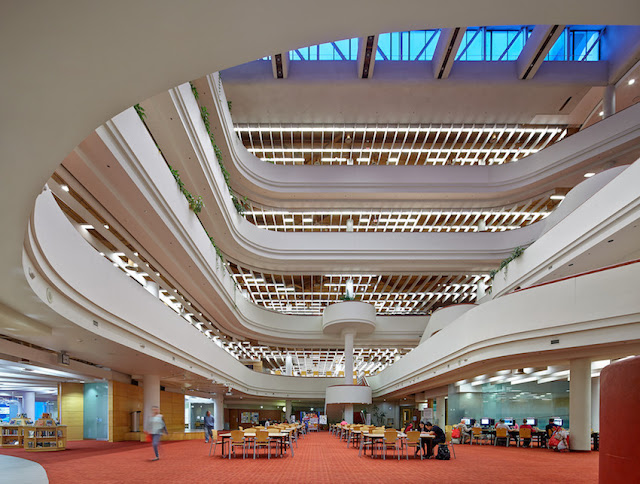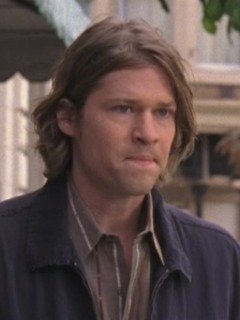Work Inspiration: Japanese-Canadian Architect Raymond Moriyama
 |
| Above: the Toronto Reference Library |
I recently watched the documentary Magical Imperfection: The Life and Architecture of Moriyama, which debuted on August 13. It focuses on the life of world-renowned architect Raymond Moriyama. You can watch it any time for free here!
 |
| Above: Raymond Moriyama |
Moriyama is the man behind some of the most iconic buildings in Canada and the world, pictured throughout this post. Moriyama has survived great adversity--when he was a boy in World War 2, his family was sent to Slocan to one of the internment camps for Japanese Canadians.
 |
| Above: Toronto Reference Library |
I have been mulling over many of Moriyama's words and his example since originally watching the documentary: how can you go through something so traumatizing, go on to have a remarkable, thriving career, much of it arguably in service of the government who once threw you and your family into an internment camp?
 |
| Above: The Canadian Embassy Tokyo |
Something I really liked about this doc is Moriyama doesn't mince words about his experience - it was awful, he does not sugarcoat this or embellish. He maybe forgives the Canadian government, but he doesn't forget, and he sure as hell isn't buying into the model minority myth. His work is not a giant middle finger to William Lyon Mackenzie King's legacy, nor to the white Canadians* who stood by while this massive human rights violation took place**. Moriyama has made beautiful buildings for all Canadians to enjoy, with social justice being a key part of his design theory. Here are some of Moriyama's words that I found particularly inspiring in the documentary.
On doing the work
 |
| Above: Surrey Civic Centre in BC |
"Whatever I do as a person, as an architect--its not so that it looks good on paper or in a magazine; its not a statement of one's ego; it has to express democracy, equality, inclusion of all people. And social justice. If not, then architecture is really a hollow sham."
"I try to work with honesty and integrity. The greed is conquering too many of us. You wind up doing things just for the money. There is more to life than just making money; my life has to mean something"
"Unless you have a big idea, details are not going to solve your problem"
On intuition
 |
| Above: the Toronto Reference Library |
"Intuition is very important to me. I could trust my feelings maybe more than the logic of it. Logic for me doesn't lead you to anything really creative and very human."
On surviving WW2
 |
| Above: Windsor City Hall |
"The treatment by the Canadian government during the war will never leave me. After all these sixty, seventy years, I still think about it. That injustice is still there. You know, we're not over it. It should have never happened to twenty-two thousand people. And should never happen again to any Canadian. I did feel hatred towards Canada for being so stupid but I tried to extract the positive aspect of what I learned, rather than the negative. So I clung on to my hope. You fight back, and try to improve it--your country, your community."
 |
| Above: Visitor Welcome Centre Renovation Phase 1 in Ottawa |
In the documentary, Moriyama recounts a particularly horrifying moment where his father was arrested for resisting the anti-Japanese restrictions. As the soldiers carried his dad away, one of them pointed finger right in Moriyama's face and told him that, "if [he] was outside after dark [he] would be shot."
Moriyama remembers thinking to himself,
"My gosh, this is Canada."
Moriyama was twelve years old when this happened.
 |
| Above: National Museum of Saudi Arabia |
"I tend to hear jazz as I design. I love jazz, and of course philosophically, jazz is music of freedom, and its motivating me to raise the standard so that architects worldwide will aspire higher."
"Having lived through the war years, I knew what democracy, true democracy should be. And city hall is what's closest to democracy in action"
"We took the attitude that the bosses should have no windows and they go in the back. And all the secretaries, stuck to a desk, should be in the front area, where they have a view"
On being the F.O.D.
 |
| Above: The Noor Cultural Centre (formerly the Japanese Cultural Centre |
Regarding the Japanese Canadian Cultural Centre (now the Noor Cultural Centre), first of its kind in Toronto (and all of Canada), which was achieved by seventy poor Japanese Canadians signing their names to a single mortgage:
 |
| Above: Interior of the Noor Cultural Centre (formerly Japanese Canadian Cultural Centre) |
"Seventy people made a contribution to self respect [...] and social justice."
Regarding the Ontario Science Centre - Moriyama was thirty-three and the youngest architect hired by the provincial government at the time. He was also the first to have, as he says, a "strange name."
"It was a really vicious, tough time. And it continued until the day they opened the door. Then, everything stopped. The world changed. It's now the norm. There are now three hundred and thirty science museums following the model of the Ontario Science Centre."
On designing the Canadian War Museum
Please note how incredibly significant it is that Moriyama is the one who designed a War Museum given he was imprisoned in an internment camp during one of the wars Canada participated in.
"Canada went to war claiming democracy, you know, individual right, but at home it was just the opposite. Almost in shambles. Twenty-two thousand Japanese-Canadians were tossed into internment camps in their own country. If you were called an 'enemy alien' as a child of twelve, and to be called a 'goddamn Jap,' it will never escape you."
"Before we started, I insisted that part of our research, we talk to Canadians across Canada and listen to their opinions, thoughts, inspiration about war or anti-war sentiment. And the input we received is part of that project now. The first day on the job I said this place is not meant to be beautiful in the conventional sense, it was meant to disturb people, and to bother them, to represent a war-torn situation."
"What I want is to think about peace, about humanity, and think about the future"
*All of my grandparents of Japanese descent were subject to internment camps during WW2. I can't even imagine being dragged away while my white friends and family stand by and watch this injustice, and yet it is something my grandparents actually experienced.
All images from Moriyama & Teshima Architects website.









